the cicadas of the mediterranean
welcome to A Teetering Vulture! a newsletter about various science stuff as well as the life happenings of its author, Taylor.

“The secret is: there aren’t that many cicada facts out there,” says Forbes 30 Under 30 Education Luminary Ceri Riley on SciShow Tangents, a science knowledge podcast she cohosts alongside science educators Hank Green and Sam Schultz, during a recent episode nevertheless all about these big, weird bugs.
Cicadas are famous, yet like many insects, relatively not much is known about them—much of their existence remains shrouded in mystery, though they have been a noteworthy, sometimes celebrated and mythologized, sometimes simply a cacophonous part of our lives since at least classical times. In Eastern North America, they are intermittently unable to go unseen or unacknowledged, as millions of periodical cicadas emerge from underground in their final nymph stage in synchronized batches every thirteen or fifteen years, proceed to molt into their adult forms, and overwhelm bushes and trees, get snagged in peoples hair and painted by artists and caught by kids and at once cheered and scorned in the space of one neighborhood block. In Japan, they are embedded into the soundscape of thousands of anime. In many places around the world, they are synonymous with the sound of summer. They rattle, they scream, they sing! They surround us, and yet like so much, we know so little.
Besides cicada species in the genus Magicicada, the periodical cicada genus, most of the world’s cicadas are known as annual cicadas. That is, cicadas that still spend as much as half a decade or so underground, but that don’t emerge and molt at the same time as all of their brethren. Annual cicadas operate out of synch, shifting through the stages of their life history at their own pace. And they are found all over the globe. There are estimates that over 3,000 species exist in the cicada superfamily Cicadoidea, from ngengeti, or the chorus cicada (Amphipsalta zelandica) endemic to Aotearoa New Zealand, to Cicadatra karpathosensis, a species of cicada discovered only in 2013, on the Greek island of Karpathos in the Aegean Sea.
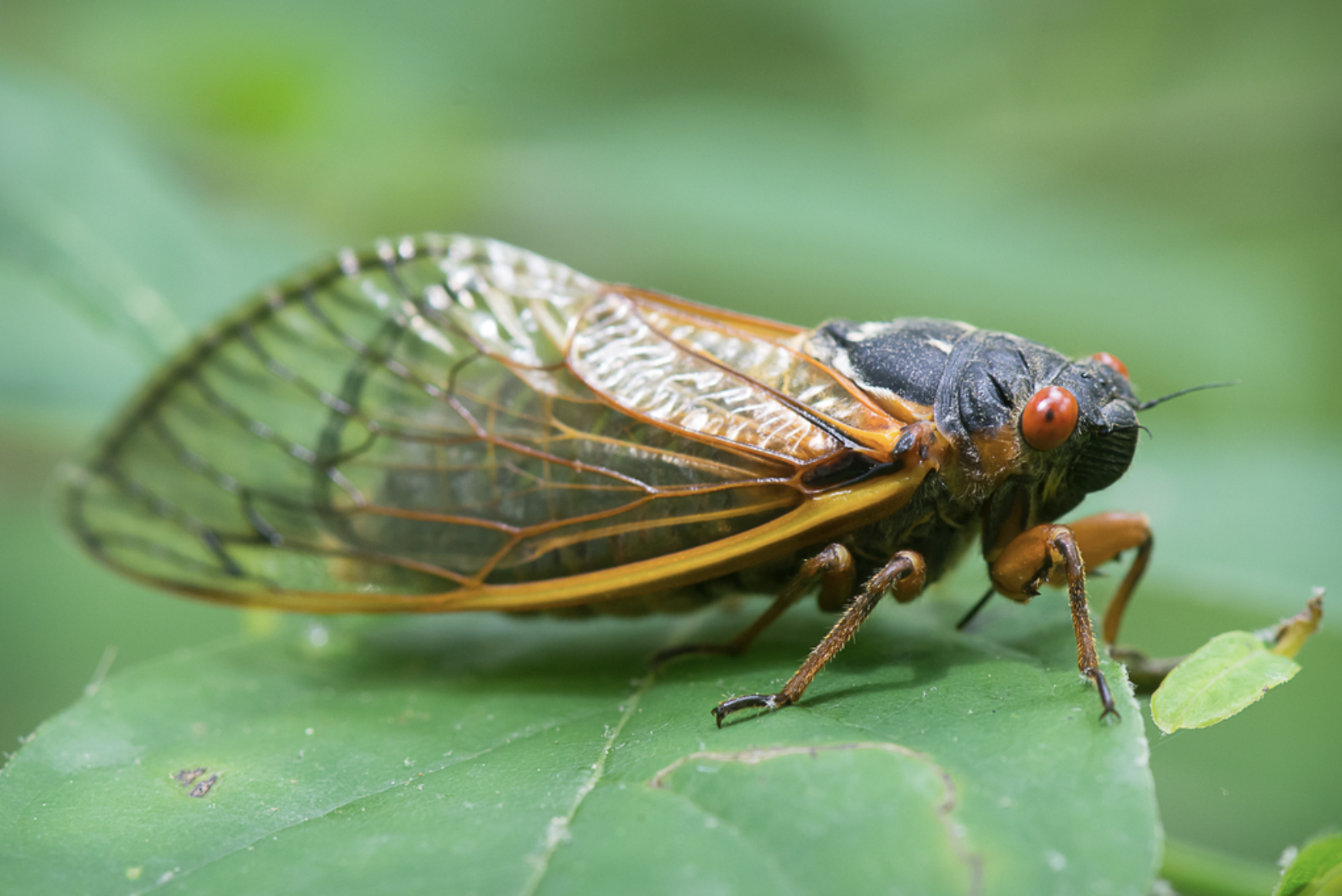
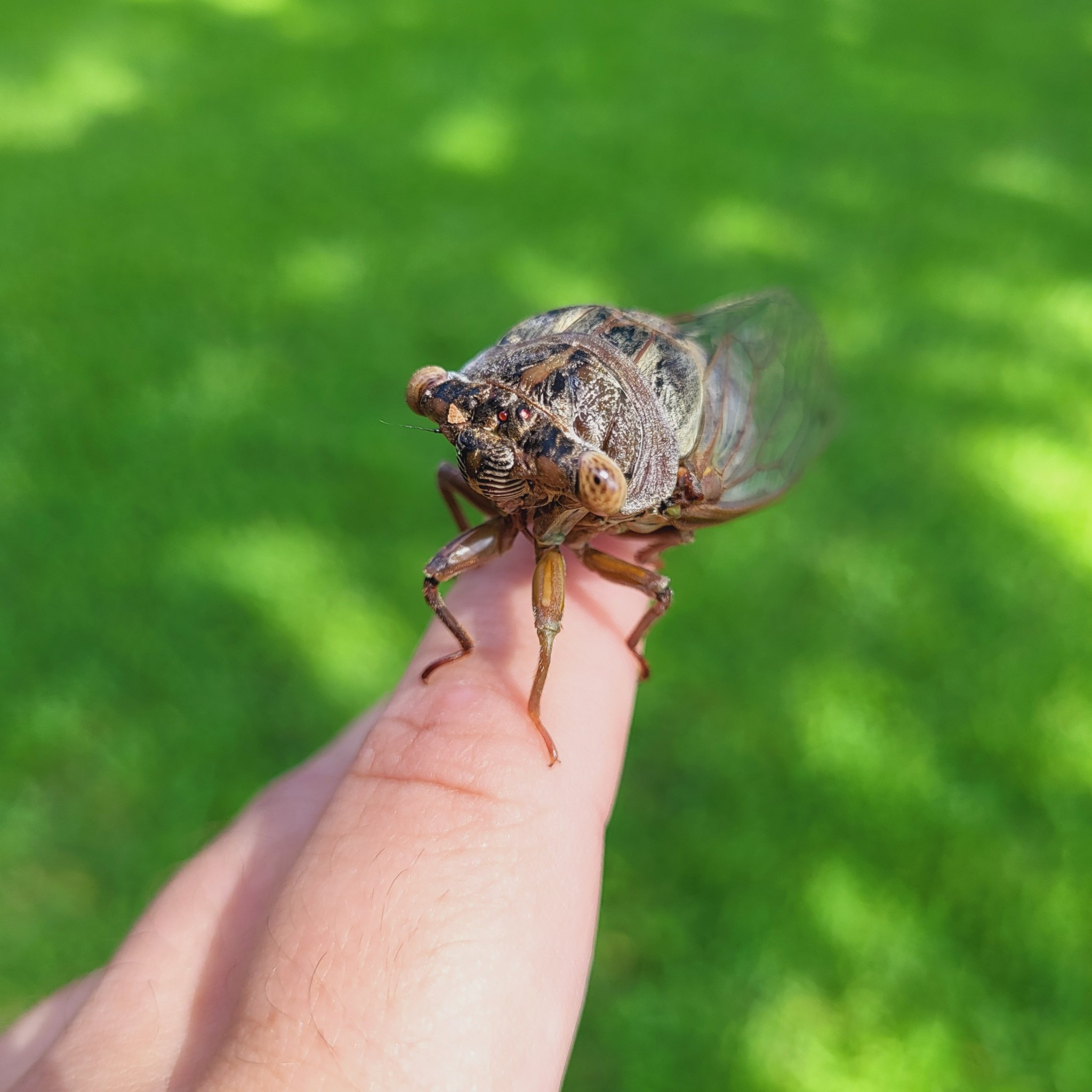
Periodical Pharaoh cicada in Ohio, and annual Northern Dog Day cicada
Dr. Paula Simões is one of the scientists who discovered C. karpathosensis, and she is also one of the rare people who has dedicated her life to uncovering more cicada facts and sharing them with the world. A senior researcher with the Centre for Ecology, Evolution, and Environmental Change at the University of Lisbon in Portugal, she has been studying cicadas in the Mediterranean since the 1990s. She has published widely on their evolution and acoustic behavior, has spent her academic career resolving the phylogenetic relationships of different species in the Mediterranean, or looking at how ancestral cicadas diverged into the species that are present today. And she has also extensively studied their songs. In the midst of this work, she has characterized a new genus of cicadas, Tettigettalna, which consists of eleven species, most of which reside in the western Mediterranean and North Africa, as well as identified new species from other genera.
It was primarily Dr. Simões research, in fact, that has motivated me to write about cicadas this week, and to specifically learn more about the cicadas of the Mediterranean. Dr. Simões research, and that SciShow Tangents episode, as well as a few other coincidental miscellanea: last week I was shown a picture of a cicada from the Bodrum Peninsula, which is a jut of land beside the Aegean in southeastern Turkey—a picture that led me to Dr. Simões work in the first place, as I tried to work out what kind it was (I am generally known in my family as the person who will upload any image of any living thing I’m sent into iNaturalist, to try and figure out what it is). I also recently watched Porco Rosso, the sunny and humorous Studio Ghibli film set in post-World War I skies above the Adriatic. And so—the challenge of identifying a mystery cicada—the piqued interest in one lifelong cicada specialist—the thought of spending time, mentally at least, in Turkey and Greece—these things all coalesced and spurred me forward rather excitedly. Plus, it’s summer! The time for thinking about and writing about cicadas is—surely—nigh!
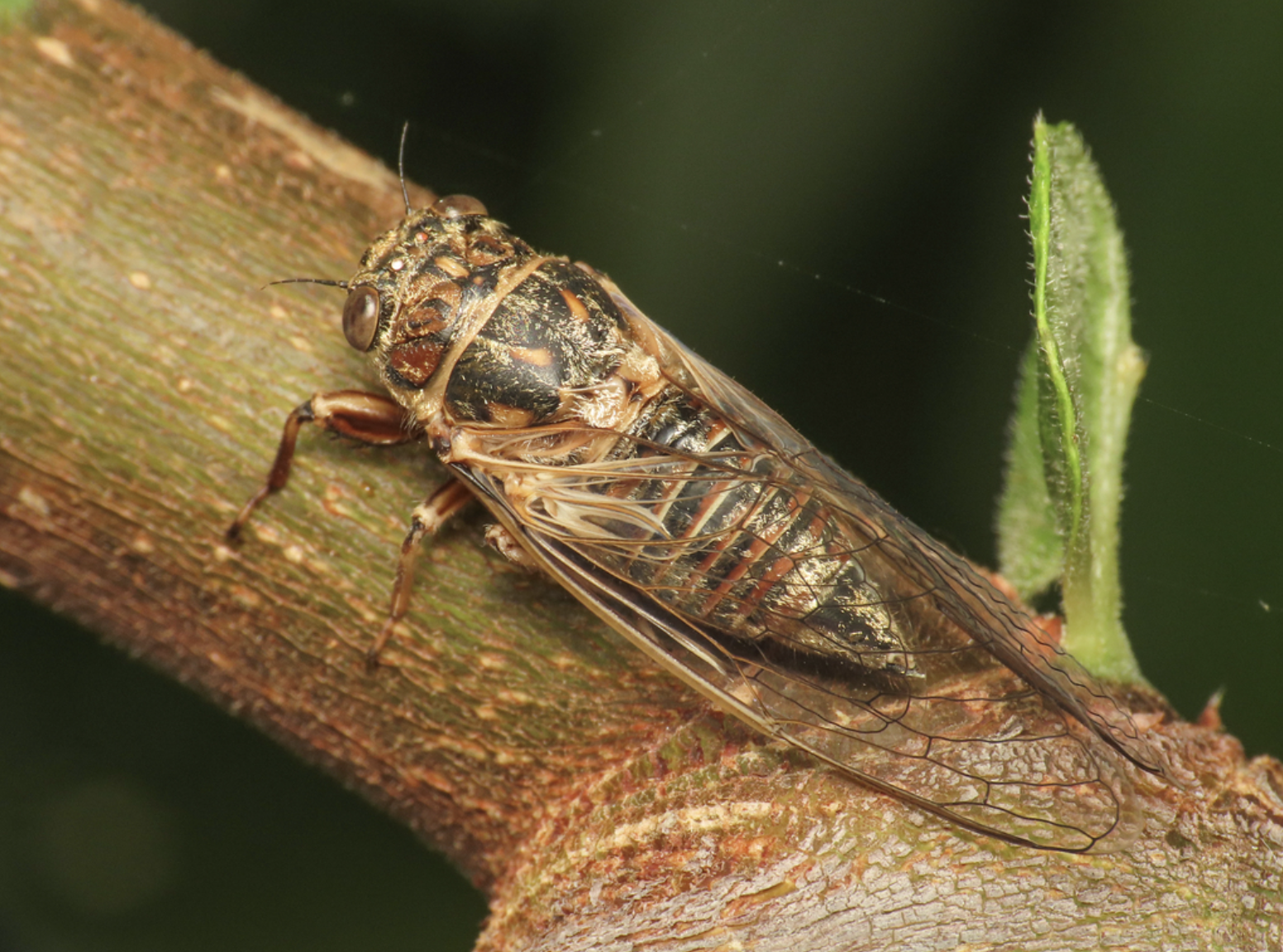
More than five million years ago, during the Messinian age of the Miocene epoch, the Mediterranean Sea almost entirely disappeared. A series of geological and climactic events culminated in the formation of a land bridge between modern day Spain and Northern Africa, which effectively closed the strait of Gibraltar and sealed the sea from the Atlantic Ocean. With no inflow of Atlantic water, the sea evaporated to near complete desiccation. For nearly a million years, there slowly appeared more and more land where there once wasn’t—a large new terrestrial domain for species extant at the time, including ancient cicadas.
The wings of a cicada, while relatively impressive in size (and beautiful in their transparency and contrasting, dark venation), are ultimately diaphanous pieces of equipment. Fragile, imprecise, and not meant for long migrations, they usually only carry cicadas short distances from where they emerged from the ground (generally only around 500 meters or less, according to one study). A sea is an insurmountable barrier for a cicada. A population on one side of a sea will indubitably stay there, indefinitely. But somehow remove the sea, and give cicadas plenty of time, and they will, 500 meters by 500 meters, disperse across it. And that’s just what Mediterranean cicadas did, over five million years ago.
The distribution of cicadas on the landmasses of the Mediterranean has been attributed to three things, the first of which is the Messinian Salinity Crisis, the period during which the sea dried up and cicada populations were able to spread, and moreover mix, like they once couldn’t. The second is the glacial activity that occurred during the Pleistocene epoch less than 2.6 million years ago. Eternally creatures of the summer, cicadas sought refuges from the cold and the ice during these times, retreating into various pockets of land, where various separated populations began evolving as different lineages—or, more technically speaking, speciating. Such speciation, when species are forming in different locations because they are physically severed from other populations, is known to evolutionary biologists as speciation via allopatric vicariance.
The third is the persistence of a dramatic and deep canyon in the seafloor of the Aegean Sea, which rives the embayment of the Mediterranean into approximate eastern and western halves. Even during the Salinity Crisis, cicadas would have been defeated in their efforts to cross this remnant of the once great sea. Today, the distribution of cicadas seems to follow a pattern dictated by that canyon: certain species are present in the west, and a different set are present in the east.
Halcyon climes in the present day Aegean, functioning together with the sea’s paleogeographic history and abundance of islands have made it a hot spot of cicada diversity. Cicadas of the genera Cicada, Tibicina, Lyristes, Cicadatra, and Tettigettalna call it home. Today, many species are no longer separated, and occur in sympatry—in the same environment with other species—even on small islands, in addition to large land masses like Anatolia and the Greek mainland.
As I stumbled into a quest to identify a species of cicada from Bodrum, I also stumbled into this surprising plethora of options to compare one photo to. Like cicadas from across the world, the one I was identifying had cryptic coloration: gentle grays and dusty browns that matched the Marquis vegetation community it spent its aboveground life in—amongst olive and fig trees, oaks and eucalyptus—and patterning that was similar on sections of its body even to cicadas like Neotibicen winnemanna, the Eastern scissor grinder cicada native to the Eastern United States. As I looked at this photo, I traced with my eyes the venation of its wings, saw how some of the veins seemed to thicken in places and thin in others; I observed its huge, captivating eyes.
But it quickly became apparent that what I was doing, flicking through images on iNaturalist and trying to decide between them, trying to discern differences in their appearances that seemed pertinent or characteristic to their species, was perhaps futile. They all looked to my eye nearly identical, with only slight variations here and there.
See, there is a reason Dr. Simões has spent so much time researching the sounds that cicadas make. There is more to their screams than meets the eye—or ear, as the case may be.
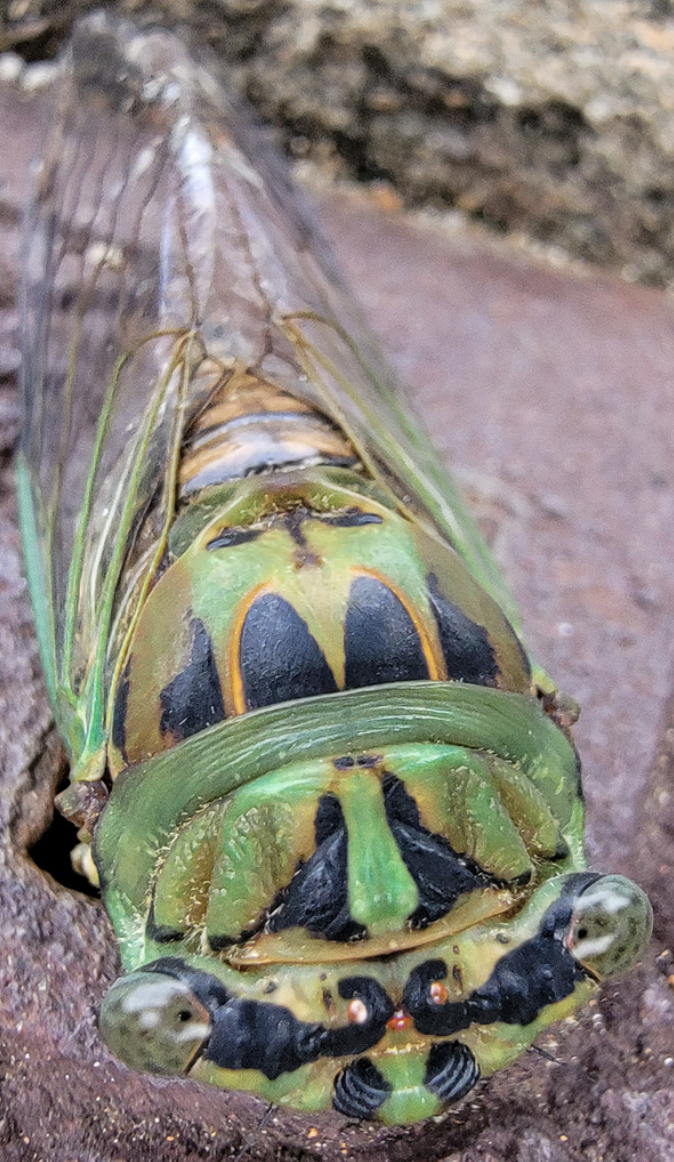
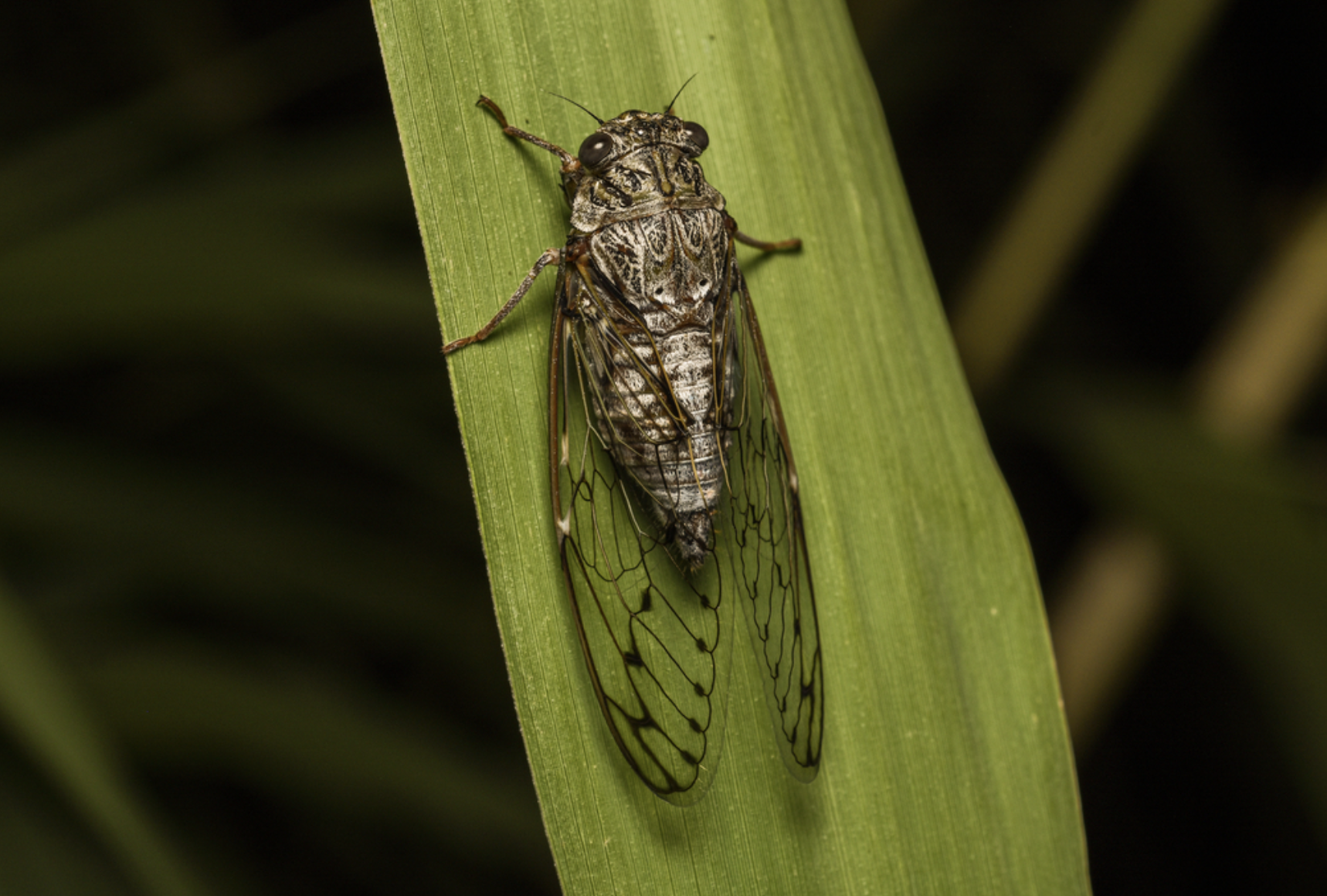
an Eastern scissor grinder cicada in North Carolina and an East Aegean cicada in the North Aegean region of Greece
Many of the cicadas that inhabit the Aegean region are, it turns out, morphologically indistinguishable. They look the same. Conspecifics recognize each other, then, not through looks but through sound alone. A female of one species hears the unique call of the male of her same species, and knows she’s being attracted towards the right potential partner.
The main unit of sound—the chirp—of a cicada’s song is known scientifically as an echeme. The composition of these echemes are drastically variable, from high pitched and continuous to sharp, rattly, and short. Therefore, cicadas in the Mediterranean are called acoustically divergent. They have speciated, sometimes while co-occurring in one location, because of the rapid deviation of different populations’ songs.
There has been investigation into just what causes acoustic divergence and the subsequent speciation of cicadas. While it’s understood that once divergence occurs, certain females will only respond to one call and one alone, thus effectively isolating populations reproductively, it’s not clear why. There are hypotheses that posit that the sounds that do the best in particular habitats will be the ones selected for, that cicadas that pass on their genes will be the ones which produce sounds in environments where those sounds attenuate and degrade the slowest, or function well amongst a certain assemblage of plants and surrounded by certain topographical features, or in certain air temperatures—but so far there hasn’t been evidence accumulated to support those hypotheses. Studies of genetic markers like microsatellite loci and allozymes confirm that most cicadas that sing different songs are indeed different species—but the driving mechanism of that speciation is unknown.
In an effort to consolidate years of cicada sound data, Dr. Simões and nine of her colleagues created the website cicadasong.eu to house the sound data—in the form of files known as oscillograms and sonograms—that they have accumulated over their time as researchers. Personally, I found this website, upon my first visit, delightfully simple and aesthetically pleasing in an old-school internet kind of way. It has one purpose: to store European cicada songs. As I began listening my way through the files, I found myself truly amazed at the protean nature of the cicada’s song, once a song I thought to be slightly monotonous and rigidly the same amongst most cicadas. The diversity of song seemed to me to be also a refutation of the idea that there aren’t many facts about cicadas, or that cicadas don’t have much to tell us. The cicadas in the Mediterranean, through their songs, have ended up telling us about the history of the seas, about glaciers from ages ago, and about one of the many ways one species can become two. And we still don’t even know everything about all of that. Cicadas irrefutably have more to tell us; their clumsy, big-eyed bodies indubitably contain many more facts than what we know now. Which means we can only look forward to uncovering them, over time.
song of the East Aegean cicada (YouTube video from cicadasong.eu)
Inspired by cicadasong.eu, I ended up finding a way to get a little help on my identification quest—in the form of some audio. Once I obtained audio of the Bodrum cicada, things got quite a bit easer: it turns out the cicada I had been looking at was an East Aegean cicada, Cicada mordoganensis. These cicadas are prevalent all along the Turkish coast and on southeastern islands in the Aegean. Their echeme is, in comparison to the cicada they are most commonly mistaken for, the Ash cicada, Cicada orni, longer in duration, with fewer per second. East Aegean cicadas create the sound of summer for those on Bodrum, while Ash cicadas create a different sound an entire sea canyon away, in the west.
Information for this article was obtained from:
Differences in the male calling songs of two sibling species of Cicada (Hemiptera: Cicadoidea) in Greece ✼ Testing drivers of acoustic divergence in cicadas (Cicadidae: Tettigettalna) ✼ The effect of the Messinian salinity crisis on the early diversification of the Tettigettalna cicadas ✼ Patterns of acoustic and morphometric variation in species of genus Tettigettalna (Hemiptera: cicadidae): Sympatric populations show unexpected differences ✼ Distribution of cicadas of the genus Lyristes (Hemiptera: Cicadidae) in the eastern Mediterranean area ✼ Two new species of Cicadatra (Hemiptera: Cicadoidea) from Greece ✼ Spatio-temporal genetic variation in sympatric and allopatric Mediterranean Cicada species (Hemiptera, Cicadidae) ✼ ‘O, Shrill-Voiced Insect’: The Cicada Poems of Ancient Greece ✼ Origin of the Eastern Mediterranean basin: a reevaluation ✼ Distribution patterns and calling song variation in species of the genus Cicada Linnaeus, 1758 (Hemiptera, Cicadidae) in the Aegean Sea area ✼ Why Cicadas Power Spray Their Pee ✼ SciShow Tangents: Cicadas ✼ cicadasong.eu